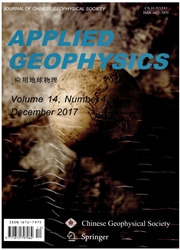

 中文摘要:
中文摘要:
一个改进数字模拟方法被介绍计算下面为在生产油井的多重薪水地区的洞温度分发。基于水动力学和热转移理论,在圆柱的坐标的一个 2-D 温度地模型被开发。在模型,我们从多孔的形成由于液体流动考虑了一般的热传导以及热传送对流到地上凿穿。我们也由于多重薪水地区在井讨厌的人考虑液体速度变化。我们在在井讨厌的人和邻近的形成,井讨厌的人和薪水地区之间的接口的现在的联合边界条件,和薪水地区和邻近的形成。最后,一个轮流出现的方向含蓄的差别方法(ADI ) 被用来解决温度模型为下面洞温度分发。有实际温度木头的建模的温度曲线的比较显示那模拟结果是一般来说相当类似于实际温度木头。我们发现全部的生产率,生产时间,孔,薪水地区的厚度,和地热的坡度,都穿上效果下面洞温度分发。
 英文摘要:
英文摘要:
An improved numerical simulation method is presented to calculate the downhole temperature distribution for multiple pay zones in producing oil wells. Based on hydrodynamics and heat transfer theory, a 2-D temperature field model in cylindrical coordinates is developed. In the model, we considered general heat conduction as well as the heat convection due to fluid flow from porous formation to the borehole. We also take into account the fluid velocity variation in the wellbore due to multiple pay zones. We present coupled boundary conditions at the interfaces between the wellbore and adjacent formation, the wellbore and pay zone, and the pay zone and adjacent formation. Finally, an alternating direction implicit difference method (ADI) is used to solve the temperature model for the downhole temperature distribution. The comparison of modeled temperature curve with actual temperature log indicates that simulation result is in general quite similar to the actual temperature log. We found that the total production rate, production time, porosity, thickness of pay zones, and geothermal gradient, all have effects on the downhole temperature distribution.
 同期刊论文项目
同期刊论文项目
 同项目期刊论文
同项目期刊论文
 The issues of prestack reverse time migration and solutions with Graphic Processing Unit implementat
The issues of prestack reverse time migration and solutions with Graphic Processing Unit implementat 期刊信息
期刊信息
